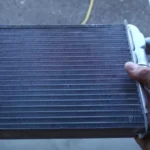
Why Gas Spews Out Of Tank When Filling? 7 Causes To Know
Why Gas Spews Out Of Tank When Filling? 7 Causes To Know
Filling up your gas tank is usually a straightforward task, but what happens when gasoline suddenly spews out of the tank during refueling? Not only is this dangerous, but it’s also messy, wasteful, and often puzzling. This blog post delves into the seven common causes of gas overflow during refueling, helping you identify and prevent this issue before it becomes a serious problem.
1. Faulty or Blocked Venting System
One of the primary reasons gas may spew from your tank is a problem with the vehicle’s venting system. This system allows air to escape as fuel enters the tank. If the vent is blocked, pressure can build up, causing fuel to back up and overflow.
How It Works
As you pump gas into your tank, the incoming fuel displaces air. The venting system allows this air to exit, usually through a vapor canister and vent lines. When the vent is blocked or the vapor canister is saturated, the displaced air has nowhere to go, forcing gasoline back out through the fill tube.
Signs and Symptoms
- Whistling sound when opening the gas cap
- Slow or difficult fueling
- Frequent fuel spills during refueling
Solutions
Inspect the vent lines and vapor canister for clogs or damage. Replacing a saturated charcoal canister or clearing debris from the vent lines can restore proper airflow.
2. Overfilling the Gas Tank
Another common yet preventable reason gas overflows is overfilling the tank. Many drivers continue to pump gas even after the nozzle automatically shuts off.
Why It’s a Problem
Gas pumps are equipped with automatic shut-off mechanisms to prevent overfilling. Ignoring this and topping off the tank can cause fuel to enter the vapor lines or the charcoal canister, leading to pressure issues and potential fuel spewing.
Signs and Symptoms
- Gas smell around the vehicle
- Overflowing fuel even after the pump shuts off
- Fuel stains on the ground or vehicle body
Solutions
Stop pumping as soon as the nozzle clicks off. Avoid topping off the tank to prevent pressure build-up and system damage.
3. Malfunctioning Fuel Filler Neck
The fuel filler neck is the pipe through which gasoline flows from the pump nozzle into the tank. Damage or blockages in this component can cause gas to back up and spill.
How It Works
A clear, unobstructed filler neck allows fuel to flow smoothly into the tank. Cracks, corrosion, or foreign objects in the neck can disrupt this flow, causing splash-back or overflow.
Signs and Symptoms
- Fuel backing up during fill-up
- Visible damage or rust around the filler area
- Difficulty inserting the pump nozzle
Solutions
Have a mechanic inspect the fuel filler neck for damage or obstructions. Replacement may be necessary if the neck is corroded or cracked.
4. Defective Fuel Tank Pressure Sensor
Modern vehicles use pressure sensors to monitor the fuel system. A faulty sensor can misread tank pressure, leading to fueling issues.
Why It Matters
If the pressure sensor falsely indicates that the tank is full or under excessive pressure, it may cause premature pump shut-off or even fuel spewing due to improper regulation.
Signs and Symptoms
- Check Engine Light (CEL)
- Inconsistent fuel gauge readings
- Frequent pump shut-offs during refueling
Solutions
Diagnostic tools can identify faulty sensors. Replacing a defective fuel tank pressure sensor restores accurate pressure monitoring and safe refueling.
5. Saturated Charcoal Canister
Part of the evaporative emissions system, the charcoal canister captures fuel vapors to prevent them from escaping into the atmosphere. A saturated canister can cause overflow problems.
How It Works
Fuel vapors are absorbed by the charcoal canister and later purged into the engine. If the canister becomes saturated with liquid fuel due to overfilling or system faults, it can block venting pathways.
Signs and Symptoms
- Strong fuel odor near the vehicle
- Trouble filling the tank
- Overflow during refueling
Solutions
Replace the saturated charcoal canister and ensure the vent solenoid and purge valve function correctly.
6. Damaged or Misaligned Gas Pump Nozzle
Sometimes, the issue isn’t with your vehicle but with the pump itself. A damaged or misaligned nozzle can lead to improper fuel flow and back-splash.
Why It Happens
Gas pump nozzles are designed to shut off when fuel backs up. A malfunctioning nozzle may not detect the backup properly, or it may shut off too late, causing fuel to overflow.
Signs and Symptoms
- Fuel spillage despite proper fueling technique
- Pump nozzle doesn’t click off as expected
- Visible wear or damage to the nozzle
Solutions
Switch pumps if you suspect a faulty nozzle. Report malfunctioning equipment to the gas station attendant for repair or replacement.
7. Issues with the Evaporative Emissions Control System (EVAP)
The EVAP system is crucial for managing fuel vapors and tank pressure. A malfunction in this system can create conditions that lead to fuel spewing.
How It Works
The EVAP system captures and stores fuel vapors, releasing them into the engine at appropriate times. Components like the purge valve, vent valve, and sensors work in tandem to manage pressure and emissions.
Signs and Symptoms
- Check Engine Light related to EVAP codes
- Difficulty filling the tank
- Fuel overflow incidents
Solutions
Use an OBD-II scanner to identify EVAP-related trouble codes. Repair or replace faulty components such as the purge valve, vent valve, or vacuum lines.
Conclusion
Fuel spewing during refueling isn’t just a minor inconvenience—it can indicate serious issues within your vehicle’s fuel or emissions systems. By understanding these seven common causes, you can take proactive steps to address them. Whether it’s as simple as avoiding overfilling or as technical as replacing a charcoal canister, each solution enhances safety and helps maintain your vehicle’s efficiency.
If you experience recurring issues, consult a certified mechanic to diagnose and fix the problem. Safe refueling starts with a healthy fuel system, and regular maintenance is your best defense against costly and dangerous fuel mishaps.




